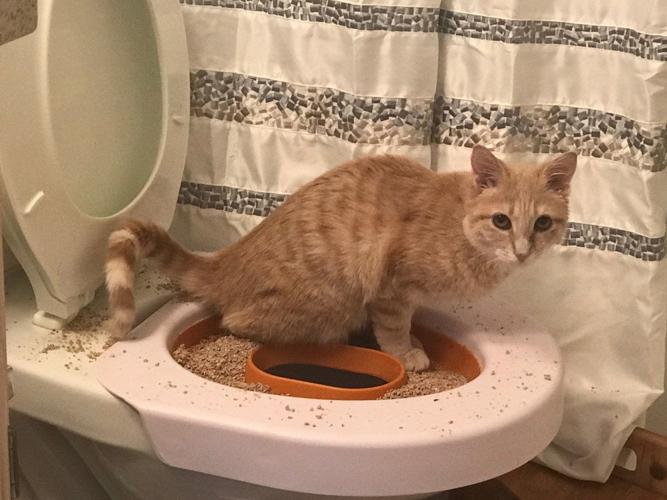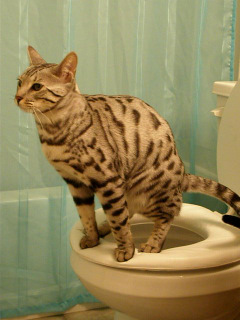Potential Issues of Flushing Cat Poop Down Your Toilet - Safeguard Your Plumbing
Potential Issues of Flushing Cat Poop Down Your Toilet - Safeguard Your Plumbing
Blog Article
The article listed below about Can You Flush Cat Poo or Litter Down the Toilet? is absolutely remarkable. You should take a peek.

Intro
As feline owners, it's essential to bear in mind how we take care of our feline pals' waste. While it might seem practical to flush feline poop down the commode, this method can have detrimental repercussions for both the setting and human health and wellness.
Ecological Impact
Flushing pet cat poop introduces unsafe microorganisms and bloodsuckers into the water system, posing a considerable threat to aquatic environments. These contaminants can negatively impact aquatic life and compromise water top quality.
Health and wellness Risks
Along with ecological issues, purging pet cat waste can also present wellness dangers to human beings. Cat feces may include Toxoplasma gondii, a parasite that can trigger toxoplasmosis-- a possibly serious ailment, particularly for pregnant ladies and people with weakened immune systems.
Alternatives to Flushing
Fortunately, there are much safer and a lot more liable methods to get rid of cat poop. Take into consideration the following alternatives:
1. Scoop and Dispose in Trash
The most typical method of throwing away feline poop is to scoop it right into an eco-friendly bag and throw it in the trash. Be sure to utilize a specialized trash inside story and throw away the waste without delay.
2. Usage Biodegradable Litter
Go with eco-friendly pet cat clutter made from products such as corn or wheat. These litters are environmentally friendly and can be safely dealt with in the trash.
3. Bury in the Yard
If you have a yard, take into consideration hiding pet cat waste in a marked location far from veggie gardens and water sources. Be sure to dig deep enough to stop contamination of groundwater.
4. Mount a Pet Waste Disposal System
Purchase a family pet waste disposal system specifically designed for pet cat waste. These systems make use of enzymes to break down the waste, reducing smell and ecological effect.
Conclusion
Responsible pet dog possession prolongs beyond providing food and sanctuary-- it additionally includes appropriate waste administration. By avoiding flushing feline poop down the toilet and choosing alternative disposal methods, we can minimize our ecological impact and secure human health.
Why Can’t I Flush Cat Poop?
It Spreads a Parasite
Cats are frequently infected with a parasite called toxoplasma gondii. The parasite causes an infection called toxoplasmosis. It is usually harmless to cats. The parasite only uses cat poop as a host for its eggs. Otherwise, the cat’s immune system usually keeps the infection at low enough levels to maintain its own health. But it does not stop the develop of eggs. These eggs are tiny and surprisingly tough. They may survive for a year before they begin to grow. But that’s the problem.
Our wastewater system is not designed to deal with toxoplasmosis eggs. Instead, most eggs will flush from your toilet into sewers and wastewater management plants. After the sewage is treated for many other harmful things in it, it is typically released into local rivers, lakes, or oceans. Here, the toxoplasmosis eggs can find new hosts, including starfish, crabs, otters, and many other wildlife. For many, this is a significant risk to their health. Toxoplasmosis can also end up infecting water sources that are important for agriculture, which means our deer, pigs, and sheep can get infected too.
Is There Risk to Humans?
There can be a risk to human life from flushing cat poop down the toilet. If you do so, the parasites from your cat’s poop can end up in shellfish, game animals, or livestock. If this meat is then served raw or undercooked, the people who eat it can get sick.
In fact, according to the CDC, 40 million people in the United States are infected with toxoplasma gondii. They get it from exposure to infected seafood, or from some kind of cat poop contamination, like drinking from a stream that is contaminated or touching anything that has come into contact with cat poop. That includes just cleaning a cat litter box.
Most people who get infected with these parasites will not develop any symptoms. However, for pregnant women or for those with compromised immune systems, the parasite can cause severe health problems.
How to Handle Cat Poop
The best way to handle cat poop is actually to clean the box more often. The eggs that the parasite sheds will not become active until one to five days after the cat poops. That means that if you clean daily, you’re much less likely to come into direct contact with infectious eggs.
That said, always dispose of cat poop in the garbage and not down the toilet. Wash your hands before and after you clean the litter box, and bring the bag of poop right outside to your garbage bins.
https://trenchlesssolutionsusa.com/why-cant-i-flush-cat-poop/

I hope you liked our post on Don’t flush cat feces down the toilet. Thanks so much for taking time to read through our posting. Do you know about someone else who is sincerely interested in the niche? Be sure promote it. Kudos for your time. Come back soon.
This Post Report this page